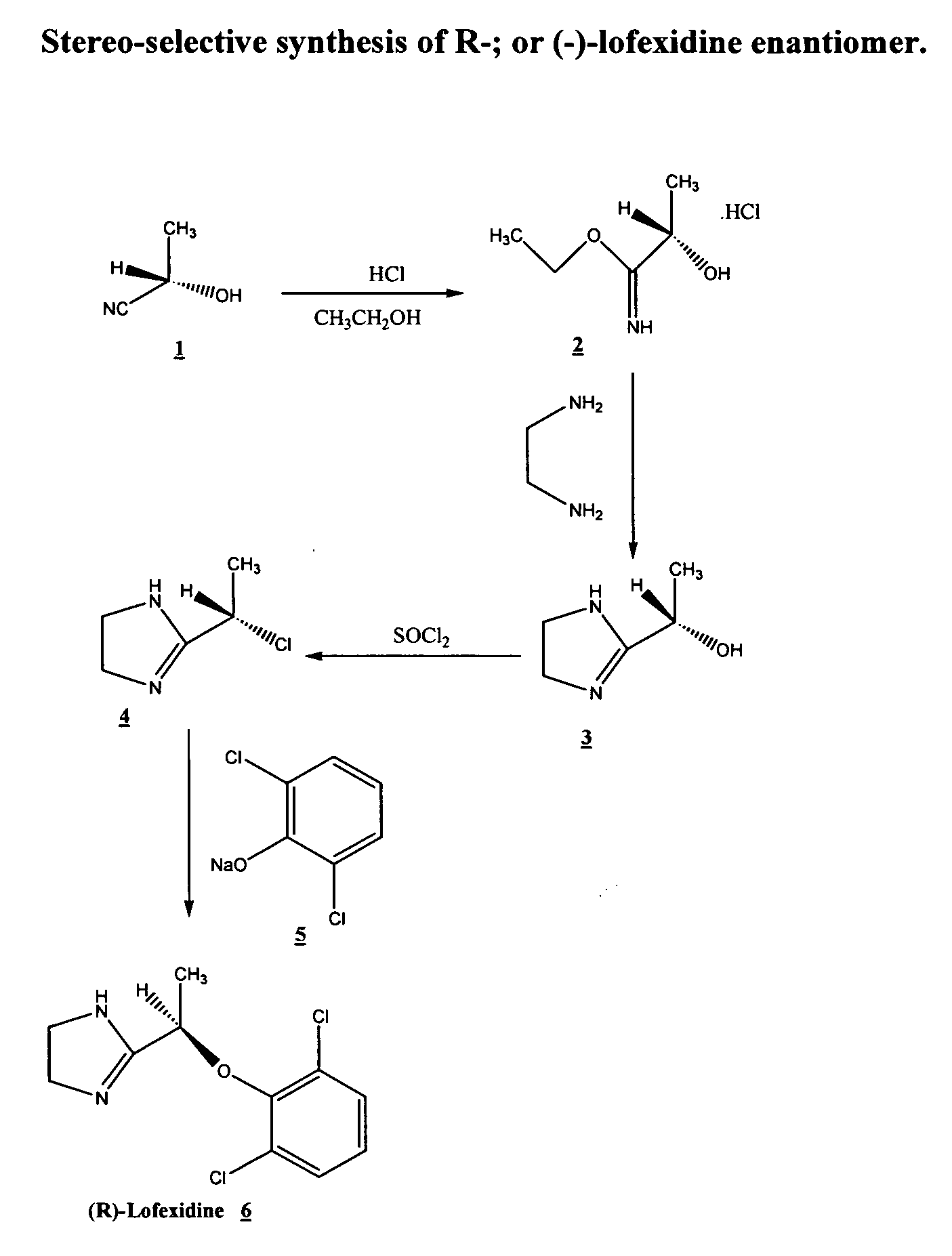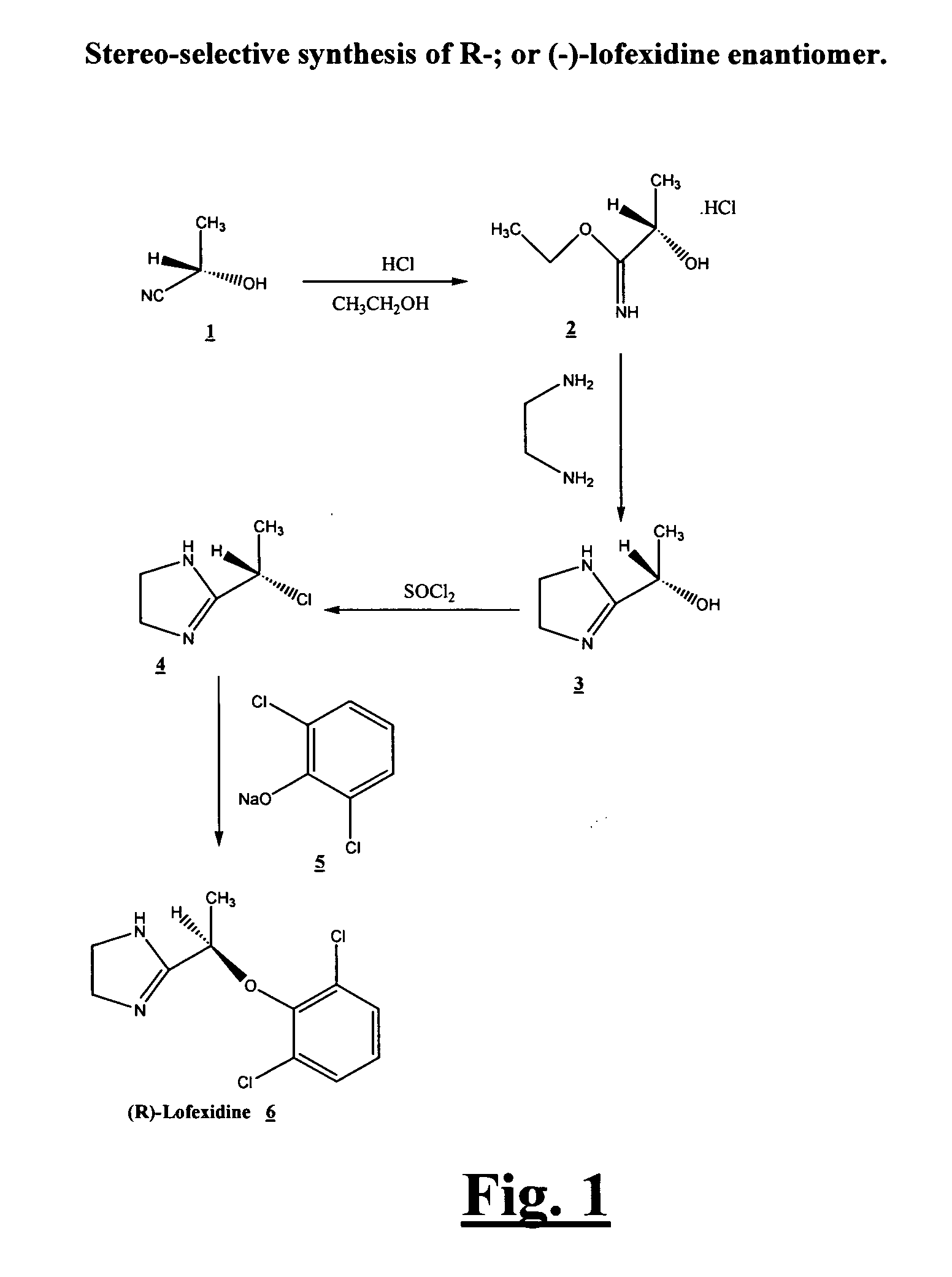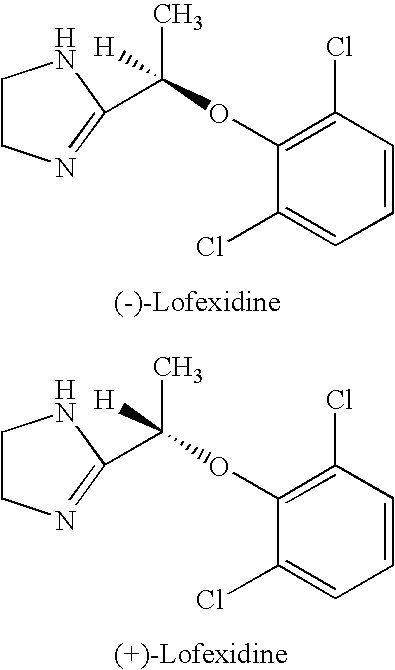Lofexidine enantiomers for use as a treatment for CNS disease and pathologies and its chiral synthesis
a technology of cns disease and enantiomers, which is applied in the field of methods for treating cns disease and pathologies, can solve the problems of few treatment options for opioid addiction, high morbidity and mortality, and 15-20 fold increase in the risk of death for intravenous drug users, and achieve the effect of maximizing the effect of enantiomers
- Summary
- Abstract
- Description
- Claims
- Application Information
AI Technical Summary
Benefits of technology
Problems solved by technology
Method used
Image
Examples
Embodiment Construction
[0013]Preliminary studies have shown that the enantiomers of lofexidine exhibit different interacting affinity with α2-adrenergic receptor. α-Adrenoreceptor activity of lofexidine is believed to reside predominantly in the (−)-enantiomer. It possesses about nine times higher affinity than the (+)-enantiomer for the α2-adrenergic binding sites in rat brain membranes. The (−)-enantiomer also exhibits about four times greater affinity than the (+)-enantiomer for α1-adrenergic receptors. Other studies demonstrate in pithed normotensive rats, intravenous administered (−)-lofexidine elicits pressor effects at doses 20 times lower than similarly administered (+)-lofexidine. Besides, following intravenous administration to pentobarbitone anesthetized normotensive rats (−)-lofexidine is twenty times more effective than (+)-lofexidine in decreasing mean arterial pressure and heart rate. (−)-Lofexidine was also found to be thirty times more potent than the (+)-lofexidine in decreasing the incr...
PUM
| Property | Measurement | Unit |
|---|---|---|
| optical purity | aaaaa | aaaaa |
| chiral purity | aaaaa | aaaaa |
| flow rate | aaaaa | aaaaa |
Abstract
Description
Claims
Application Information
 Login to View More
Login to View More - R&D
- Intellectual Property
- Life Sciences
- Materials
- Tech Scout
- Unparalleled Data Quality
- Higher Quality Content
- 60% Fewer Hallucinations
Browse by: Latest US Patents, China's latest patents, Technical Efficacy Thesaurus, Application Domain, Technology Topic, Popular Technical Reports.
© 2025 PatSnap. All rights reserved.Legal|Privacy policy|Modern Slavery Act Transparency Statement|Sitemap|About US| Contact US: help@patsnap.com



